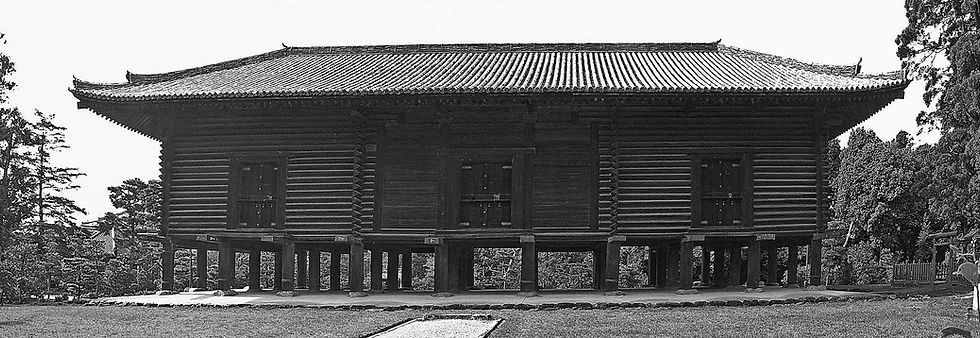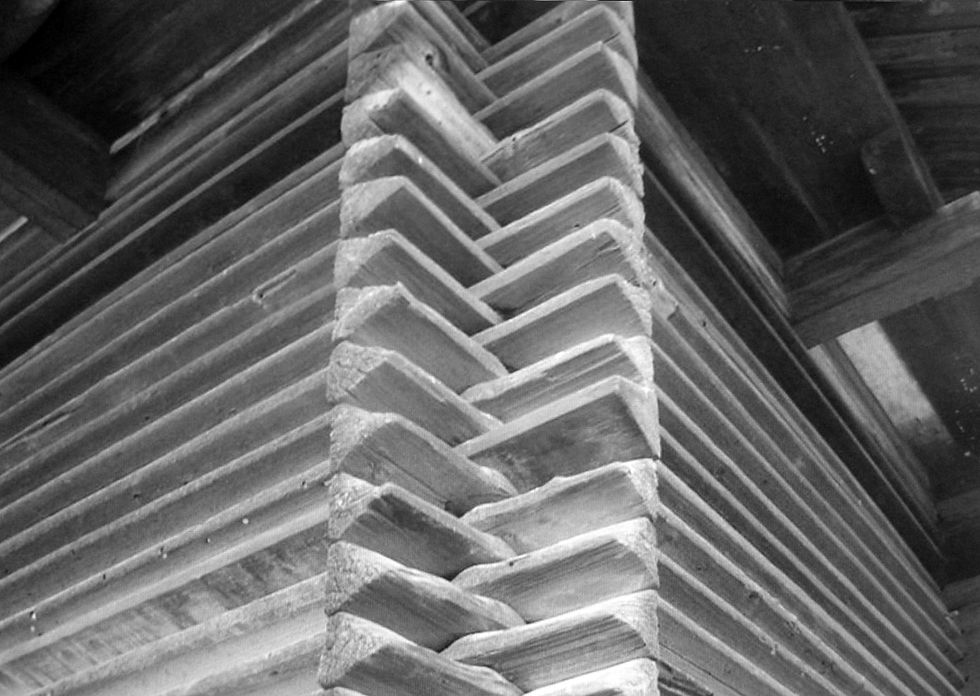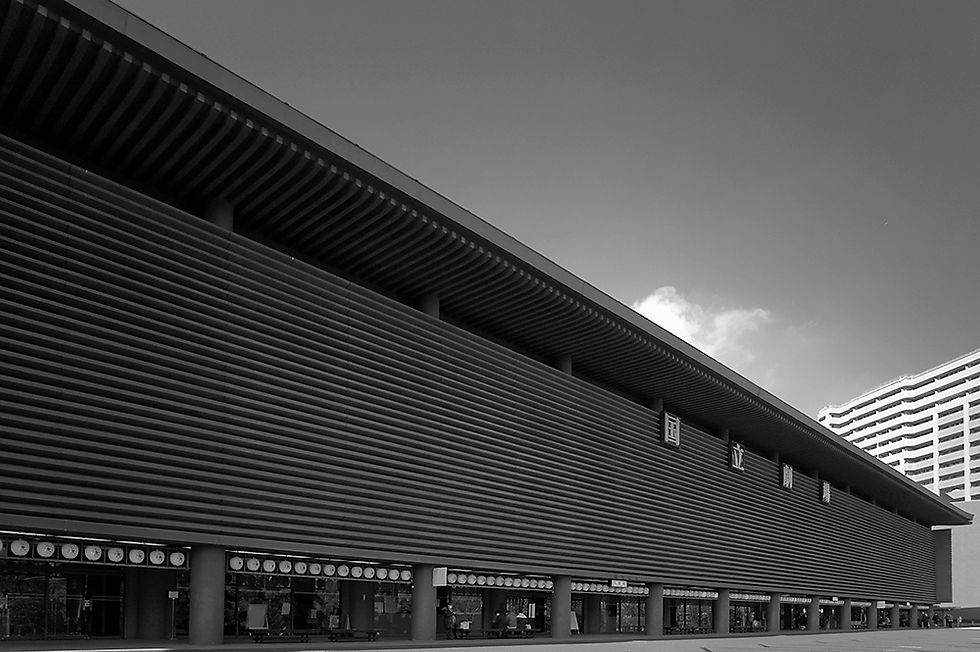
Do|Co|Mo|Mo is an international organisation dedicated to the Documentation and Conservation of buildings, sites and neighbourhoods of the Modern Movement. The Japanese branch has selected 100 works as representative of the development of the Modern Movement in Japan. In a series of short posts I will feature some of the selected works that I have had the chance to visit and photograph. This post features the National Theatre of Japan completed in 1967, located in Tokyo and designed by Hiroyuki Iwamoto of the Takenaka Corporation...
Background
Takenaka Corporation is one of the Big Five construction companies discussed in my post dated May 1, 2017. Iwamoto became Department Manager in the Osaka Head Office Design Section in 1962, after which he designed Takenaka’s new head office building on Midosuji, which was completed in 1965 and is located near to the Osaka Gas Building featured in my post dated April 29, 2019 . In 1963 he won first prize in an open architectural design competition for the National Theatre of Japan and the building was completed in 1967.

Takenaka Head Office, Osaka : Hiroyuki Iwamoto : 1965. Refined proportion, detailing and muted brown ceramic tile finish.
Design
Iwamoto favoured a subdued architecture that used muted colours (usually earthy brown tones) and often used ceramic tile finishes. However, the National Theatre is clad in precast concrete members that mimic traditional Japanese log buildings and Iwamoto had the concrete tinted to an earthy brown and sandblasted to prevent light reflection and give a softer appearance.

National Theatre of Japan, Tokyo : Hiroyuki Iwamoto : 1967
The specific model for the design is the 12th century Shõsõ-in repository that originally served Tõdai-ji temple in Nara and was later transferred to the jurisdiction of the Imperial Household Agency.

Shõsõ-in, Nara : 12th century. (unknown photographer)
The Shõsõ-in can be seen as an elegant ‘black box’ housing cultural treasures - a metaphor that is also appropriate for the design of a National Theatre. Mimicking the details of traditional log construction in modern concrete might be seen as less appropriate.

(unknown photographer)

Top : Corner detail in timber at Shõsõ-in.
Bottom : Corner detail in concrete at National Theatre of Japan.
Significance
The National Theatre of Japan and other works by Takenaka illustrate the ability of in-house design sections of major Japanese construction companies to consistently produce well-detailed buildings that can stand the test of time and remain crisp and fresh. In the case of Takenaka this is often accompanied by an understated elegance with careful attention to materials and proportion.

National Theatre of Japan, Tokyo : Hiroyuki Iwamoto : 1967.
All images by John Barr unless otherwise noted
© John Barr 2021

Comments